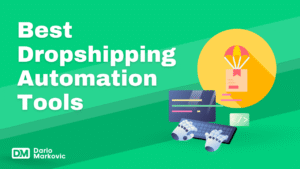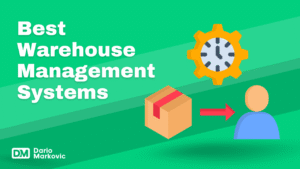Building an automated business has transformed how entrepreneurs generate income in 2025. As someone who has scaled three automated businesses to six-figure revenue and consulted over 200 clients on automation strategies, I’ve witnessed the power of systems that work while you sleep.
This comprehensive guide explores 15 proven automated business models that minimize manual work while maximizing passive income potential. Whether you’re looking to escape the 9-to-5 grind or add revenue streams to your existing ventures, these strategies offer scalable paths to financial freedom.
In this guide:
- Discover 15 automated business ideas with real income potential
- Learn implementation strategies from hands-on experience
- Understand the technology and tools that make automation possible
- Get actionable steps to start your automated business journey
My Top Picks
What is an Automated Business?
An automated business is a venture that leverages business operations and technology, software systems, and strategic processes to generate revenue with minimal human intervention after the initial setup phase.
After transitioning from a demanding 70-hour corporate workweek to running predominantly automated ventures, I define it as:
“a business model that utilizes integrated automation systems to handle repetitive operational routine tasks, allowing owners to focus on strategy and growth rather than daily management.”
Let’s start with:
1. Affiliate Marketing
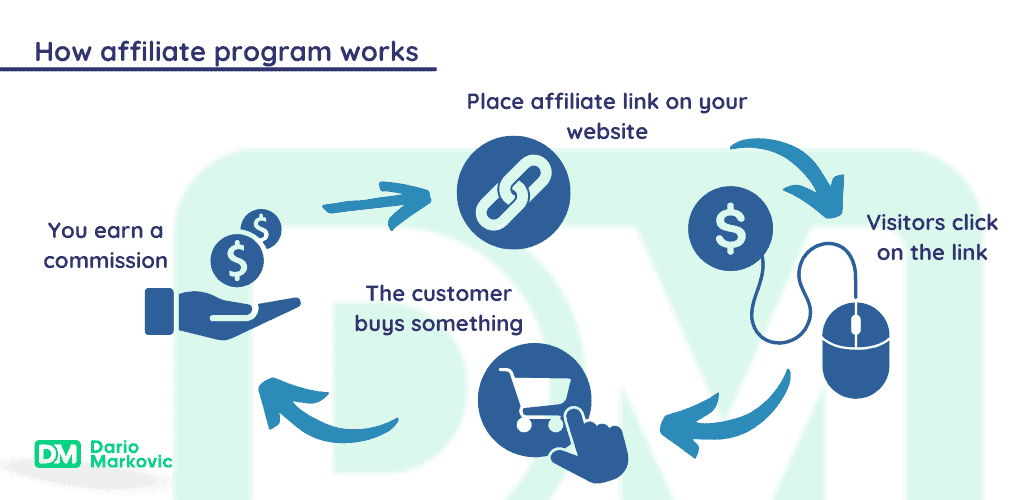
First, build your own website or a blog, then you can start with Affiliate marketing. This is an important first step to do.
Affiliate marketing is an automated business model where you earn commissions by recommending products or services from other businesses. This can generate substantial passive income streams, with affiliate marketers in the U.S. earning an average of $56,141 annually.
To achieve success, it’s essential to establish authority within a niche and build a library of quality evergreen content that continues to attract traffic and potential buyers over time.
Key Features:
User-Friendly Interface: PartnerStack is known for its intuitive dashboard and ease of use, making it accessible for businesses of all sizes.
Comprehensive Analytics: The platform offers detailed analytics and reporting tools to track affiliate performance and ROI effectively.
Automated Payouts: PartnerStack automates the payout process to affiliates, ensuring timely and accurate payments.
Strong Support: The company provides excellent customer support, including onboarding assistance and ongoing help to optimize affiliate programs.
Pricing
PartnerStack offers custom pricing based on the specific needs and scale of your business. Interested companies need to contact PartnerStack for a detailed quote tailored to their requirements. Pricing is based on several factors:
- The number of partners managed through the platform.
- The level of customization and support required.
- The volume of transactions and affiliate sales processed.

Personal Quote
Affiliate marketing is a powerful revenue channel that drives passive income and brand growth. Having built a $5,000/month affiliate site and managed affiliate partnerships at Eric Javits, I’ve seen firsthand how strategic collaborations and platforms like Rakuten optimize conversions.
Success in this space relies on:
Authority Building – Creating valuable, niche-focused content.
Strategic Partnerships – I’ve secured 15-40% higher commissions through direct outreach.
Scalable Systems – My content automation strategy cut production time by 35%.
When launching my affiliate site, in-depth product comparisons tripled commissions versus standard reviews.
For beginners, I recommend focusing on 15-20 evergreen content pieces—clients who follow this model typically hit $1,000/month within 6-9 months.
My Recommendation
Ready to elevate your affiliate marketing game?
Discover the benefits of Partnerstack.
2. Write an E-Book
The e-book market`s ongoing growth offers lucrative opportunities for passive income and establishing expertise. It also facilitates additional revenue streams like course sales.
- Effective marketing strategies include affiliate partnerships, podcast appearances, and sponsored blog posts, ensuring sustained exposure.
- Early positive reviews, particularly on platforms like Amazon, boost visibility and sales potential
- Leveraging online bookstores streamlines sales and distribution, with reader feedabck enabling future enhancements.

E-books serve as a standalone income source and complement other endeavors like blogging and affiliate marketing, forming a cohesive approach to revenue generation.
Features of E-Books
Low Barrier to Entry: Creating and publishing an e-book requires minimal upfront investment compared to traditional publishing.
Global Reach: Digital products distribution allows authors to reach readers worldwide without geographical limitations.
Flexible Formatting: E-books can incorporate multimedia elements like hyperlinks, videos, and interactive content.
Evergreen Revenue: Once published, e-books can continue generating income for years with minimal maintenance.
Pricing E-Books by Dario Markovic
Personal Quote
Having published two e-books in business and digital marketing, I’ve seen how this channel establishes authority while generating passive income.
My first e-book took 120 hours to create but has sold thousands of copies at $9.99 with minimal upkeep.
Key success factors I’ve identified:
Market Research – Analyzing top competitors’ reviews uncovers content gaps.
Strategic Pricing – $7.99-$12.99 works best for business content; niche guides convert better at $4.99.
Backend Monetization – My e-books drive high conversion rates to courses and coaching.
For beginners, I recommend starting with a 15,000-25,000 word guide—my first profitable e-book took just nine weeks of part-time writing.
My Recommendation
Ready to create and publish your e-book?
Discover the benefits of Amazon Kindle.
3. Software (SaaS Product)
Software represents the pinnacle of scalability and automation as it can be distributed to countless customers using the same underlying code.
Premium software tools can be marketed as either one-time purchases or through recurring monthly subscriptions.
- For individuals lacking the technical expertise to develop such products independently, collaboration with skilled partners or hiring professionals is a viable option.
- Alternatively, white-labeling existing software offers a shortcut to entering the market.
- The primary concern is to ensure a demand exists for the product being developed.
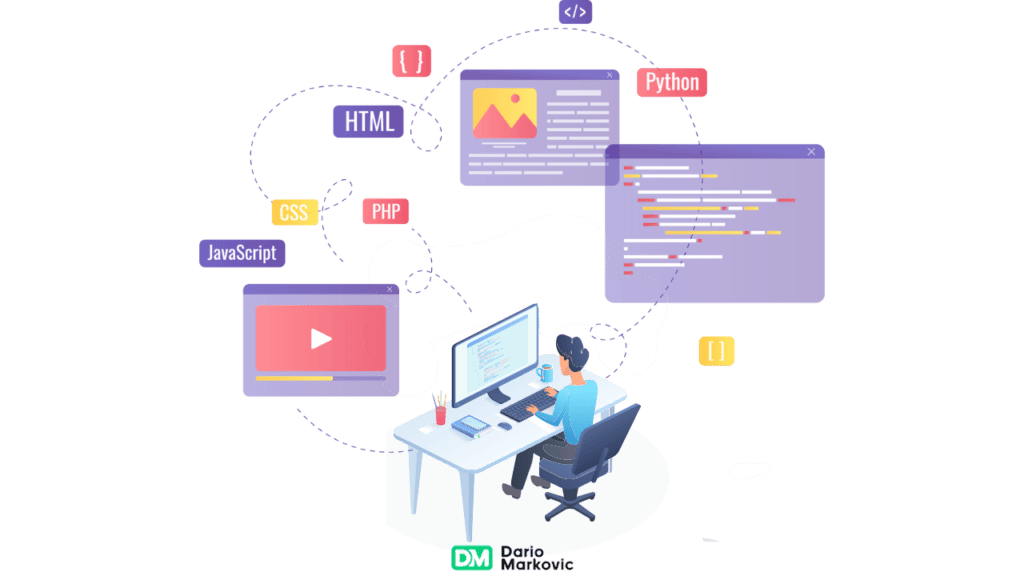
Platforms like AppSumo or ProductHunt can be valuable resources for gaining initial traction and visibility within the target market.
Features of SaaS
Recurring Revenue: Subscription-based models provide predictable, ongoing income streams.
Scalability: The same code base can serve thousands or millions of users with minimal marginal costs.
Remote Operation: Cloud-based software can be managed from anywhere, allowing for location independence.
Data-Driven Improvements: Usage analytics enable continuous optimization and feature development.
Pricing
SaaS pricing typically follows these models:
Freemium: Free basic version with premium paid upgrades
Tiered pricing: Multiple subscription levels based on features/usage
Per-user pricing: Charges based on number of users
Usage-based pricing: Charges based on consumption of resources
Personal Quote
Software offers unmatched scalability and automation, which I’ve experienced firsthand by developing and marketing one SaaS products, including the content marketplace software my team and I are launching in April 2025.
After pivoting from service-based businesses, I found that software allows unlimited scaling with minimal marginal costs.
For non-technical founders starting out, I recommend focusing on:
Market Validation – Before development, survey your target users to understand their needs and confirm their willingness to pay. This ensures you build something people truly want.
Strategic Partnerships – Partner with technical experts to handle development while you focus on marketing and user experience.
Start with an MVP – Begin with a lean minimum viable product to gather early feedback from users, allowing you to refine and improve your software based on real-world usage.
For beginners, the key is to take small, consistent steps: validate your ideas, create a simple version of your product, and iterate based on customer feedback.
Building something people need is the first step to sustainable success.
My Recommendation
Ceate and your own software here:
4. Build a Helpful Website
Building a content-driven website has the potential for generating significant passive income. Once your site is live and starts ranking on search engines, it operates semi-automatically, attracting organic traffic and generating income even when you’re offline.
The core of success lies in providing valuable content that solves users’ problems or answers their questions.
The revenue streams for these websites often include display advertising (like Google AdSense) and affiliate marketing, which scale as website traffic grows.

Features of a Successful Website
Organic Traffic: Through search engine optimization (SEO), a well-ranked website attracts visitors without paid marketing.
Recurring Revenue: Monetization strategies like display ads and affiliate marketing can generate ongoing income as long as the website remains relevant and continues attracting visitors.
Scalability: With the right content, your website can grow exponentially without significant added effort, allowing for easy scaling.
Automated Earnings: After initial content creation and SEO work, the site can continue earning revenue with minimal daily involvement.
Personal Quote
When I first started my business career in Chile, I built websites across various niches, learning firsthand how content-driven sites can generate passive income.
These two sites earned a combined $8,500/month through display advertising and affiliate partnerships.
Key lessons I’ve learned from building successful content websites:
Niche Down – Focus on specific, well-targeted niches to stand out and gain organic traffic.
Content Consistency – Regularly adding high-quality articles builds authority and drives ongoing traffic.
Monetize Strategically – Combining affiliate relationships and display ads can create a diverse revenue stream, reducing reliance on any single income source.
For beginners, I recommend picking a niche you’re passionate about and creating a strong base of 30-40 comprehensive articles.
My Recommendation
Here is an excellent platform to help build a website for your content-driven projects
5. Rental Properties
Real estate investing, particularly rental properties, can evolve into a fully automated business idea with the right systems, tenants, and team in place. Whether you’re managing residential, commercial, or raw land properties, the model offers substantial potential for generating passive income over time.
However, it’s important to recognize that success in real estate requires strategic systems for property management and tenant relations.
The automation aspect comes from having the right tools, processes, and a trusted team, ensuring that the properties essentially “run themselves” once established.
A major advantage of real estate is that it provides both long-term wealth generation through appreciation and consistent monthly cash flow.

Features of a Successful Rental Property Business
Stable Cash Flow: Properties provide a reliable monthly income through rent payments, which can be automated with direct deposits.
Appreciation Potential: Over time, real estate properties typically increase in value, providing long-term wealth accumulation.
Tax Advantages: Depreciation, deductions for mortgage interest, and other tax benefits can reduce taxable income and increase profitability.
Scalability: Once efficient systems are in place, you can scale by acquiring more properties with minimal additional time investment.
Personal Quote
Since 2012, real estate has been a significant part of my investment portfolio. I started with a single-family rental property, using capital from my digital businesses, and focused on cash flow automation through efficient automated system and teams.
My portfolio now includes seven residential units and two commercial properties, generating $14,300/month in net cash flow after all expenses.
The automated systems I’ve developed requires less than 5 hours of my attention monthly.
Key lessons I’ve learned in building this automated real estate operation:
Tenant Selection is Critical – A rigorous screening system has decreased tenant-related issues by 83%, increasing retention from 14 to 31 months on average.
Preventative Maintenance Saves – Quarterly inspections have cut emergency repair costs by 42%.
Documenting Processes Enables Delegation – My 43-page operations manual allows managers to handle 77% of tasks without owner input.
For beginners, I recommend starting with one unit to build efficient systems before scaling. My first property required 8-10 hours/week of active management until processes were refined and I hired a part-time manager.
The key to success in rental properties is not just the properties themselves, but the management systems you build around them.
After five years of refining, our management costs average 8.2% of gross rents, covering tenant interactions, maintenance, and financial reporting.
My Recommendation
Here is an excellent platform that can help you streamline the managemenz of your rental properties:
6. Sell Your Bandwidth
Selling unused internet bandwidth is a simple way to generate passive income by sharing excess data capacity with companies or data scientists. The concept relies on the fact that most individuals have a portion of their internet bandwidth that remains underutilized, and platforms like Honeygain provide an opportunity to monetize it.
Users install an app on their device, connect it to the internet, and earn money by sharing their unused data. The system works automatically, requiring minimal user involvement once set up. While the income may not be substantial, it provides a simple, low-effort way to make money passively.
Features of Selling Your Bandwidth
Passive Income: The app runs in the background, generating income automatically while you’re online.
Low Effort: Once the app is installed, there’s little maintenance required, making it a good option for people looking to make money without investing much time.
Scalable: More devices or connections sharing unused bandwidth can increase potential earnings.
Global Reach: Most platforms are available to users in different countries, making it accessible globally.

Pricing
There’s no upfront cost to start using these platforms, but earnings depend on the amount of unused data shared.
For example:
Honeygain: Users earn up to $30/month by sharing around 10 GB of data daily.
Data Limits: Users may need an unlimited data plan to avoid extra charges due to high data consumption.
Personal Quote
A recently popular app called Honeygain allows users to sell unused internet bandwidth, earning up to $30/month by sharing data with data scientists. Users can install the app on Windows, MacOS, and Android and earn rewards automatically once connected to the internet.
To start, users need to share about 10 GB of data daily to reach the $30 limit. On average, users accumulate $20 in rewards after 48 days, with a $5 bonus for new users. However, it’s important to be on an unlimited internet plan since sharing this data can quickly consume significant bandwidth.
While this approach can generate passive income, it’s best suited for those who have extra bandwidth and want to earn a bit without requiring much effort.
My Recommendation
A recently popular app called Honeygain allows users to sell unused internet bandwidth, earning up to $30/month by sharing data with data scientists. Users can install the app on Windows, MacOS, and Android and earn rewards automatically once connected to the internet.
To start, users need to share about 10 GB of data daily to reach the $30 limit. On average, users accumulate $20 in rewards after 48 days, with a $5 bonus for new users. However, it’s important to be on an unlimited internet plan since sharing this data can quickly consume significant bandwidth.
While this approach can generate passive income, it’s best suited for those who have extra bandwidth and want to earn a bit without requiring much effort.
7. Product Licensing
Product licensing allows you to generate passive income by partnering with companies that manufacture, market, and sell your product ideas.
In exchange, you earn royalties from product sales, eliminating the need for you to handle production or logistics.
Key Features:
Passive Income: Earn royalties without being involved in the production or sales process.
Low Risk: No manufacturing or distribution costs.
Leverage Partners: Utilize established companies to bring your product to market.
Scalable: Your product can reach a wide audience with minimal effort.

Personal Quote
I see it as a promising strategy for monetizing intellectual property without the need for manufacturing, logistics, or customer service involvement.
Licensing allows creators to leverage their ideas and inventions by partnering with established manufacturers, securing a steady royalty income while keeping risk low.
For those new to licensing, I recommend focusing on these steps:
Develop a Prototype – Having a functional prototype or design makes it easier to pitch your idea and secure interest from potential licensing partners.
Consider Patent Protection – Obtaining a provisional patent can strengthen your negotiating position by providing legal backing for your intellectual property.
Test the Market – Show that there is demand for your product, whether through pre-orders or small-scale crowdfunding, to demonstrate its potential success to manufacturers.
Product licensing can be a great way to generate passive income without the challenges of running production, and I plan to explore this strategy more deeply for future ventures.
My Recommendation
Here is a platform that can help you get started with product licensing:
8. Self Storage
Self-storage is a highly automated business model, with over 20% of Americans utilizing such facilities. Remote management tools make it easier to operate these businesses, although a considerable initial investment may be required.
For smaller-scale options, platforms like Neighbor allow users to rent out unused spaces such as parking spots, sheds, or attics to earn passive income.
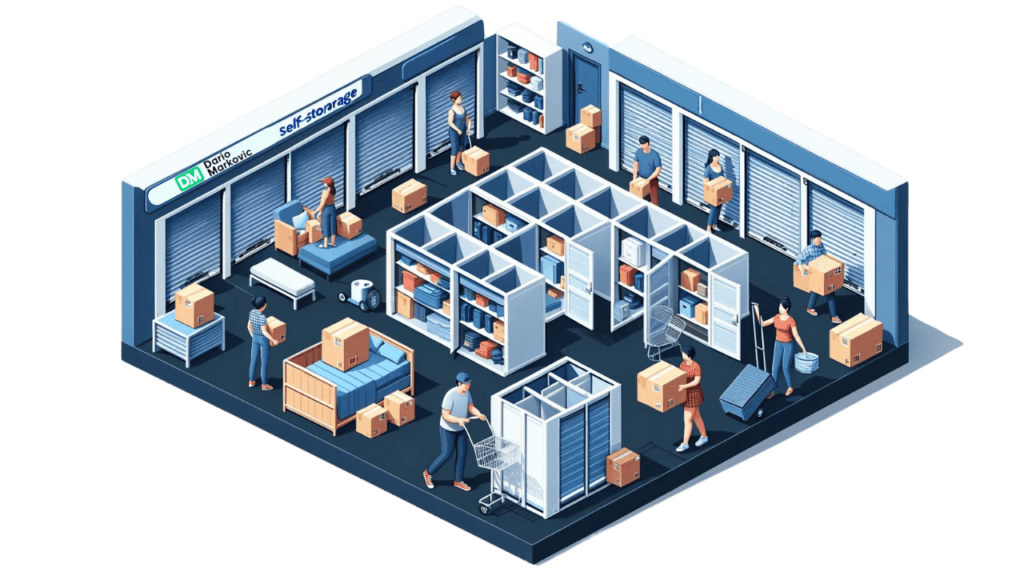
Key Features:
High Demand: Over 20% of Americans use self-storage, providing a reliable market.
Automation: Remote management tools reduce hands-on involvement.
Low Overhead: Renting out unused space through Neighbor offers minimal initial investment.
Pricing & Income Potential:
Rent out spaces for a steady income, with the potential to earn thousands annually depending on location and space size.
Personal Quote
I haven’t personally ventured into the self-storage business, I see it as a powerful fully automated model with strong demand—over 20% of Americans currently use self-storage facilities.
With modern tools, storage facilities can be managed remotely, which reduces the need for hands-on involvement. However, it does require a considerable initial investment to set up.
For those looking for a smaller-scale entry point, platforms like Neighbor provide an opportunity to rent out unused space—such as parking spots, garages, sheds, or attics.
This allows you to convert surplus space into income with relatively passive involvement.
Hosts on Neighbor have the potential to earn thousands of dollars annually by renting out their space, making it an appealing option for those with unused areas but not wanting to commit to a large-scale investment.
While I plan to explore self-storage as an investment strategy in the future, I believe it offers an accessible route for individuals to monetize their underutilized space with minimal effort.
My Recommendation
9. Sell Stock Photos and Videos Online
Selling stock photos and videos is an excellent way to monetize your photography or videography skills. However, building a successful portfolio requires attention to detail and strategy.
Key steps include acquiring model releases, maintaining high-quality content, and ensuring that your photos are free from branding or trademarks.
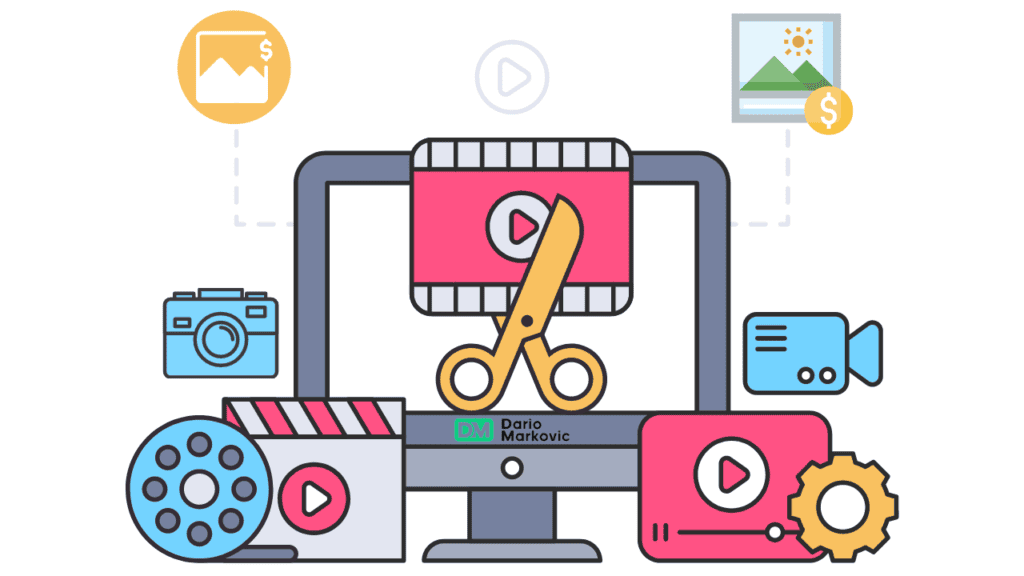
Key Features
Platform Handling: Websites like Alamy, Shutterstock, iStock, and Dreamstime handle sales and distribution, allowing you to focus on content creation.
Royalties: You earn royalties from the sales of your images and videos.
Licensing: Ensure all your content is legally sound by acquiring model releases and adhering to licensing guidelines.
Pricing & Income Potential:
Alamy: Offers a 40-50% royalty on each sale, depending on the sales channel.
Prices for stock photos vary, but you could earn from a few dollars to several hundred dollars per image or video, depending on its usage, size, and licensing terms.
Personal Quote
I recognize it as a great way to monetize your passion for photography and videography.
Platforms like Shutterstock, iStock, and Dreamstime allow photographers and videographers to upload images and videos to be sold, with the platforms handling sales and distribution.
Creators earn royalties from the sales of their content.
To succeed in this field, it’s important to:
Acquire model releases to avoid legal complications.
Maintain high-quality photos and videos to meet platform standards.
Leave space for text in images to make them more versatile for users.
Ensure your photos are free from brands or trademarks to avoid copyright issues.
While I haven’t explored this business model myself, I believe it’s a low-maintenance way to generate passive income, especially for those who are passionate about photography or videography.
My Recommendation
Here is a platform where you can sell your stock photos and videos online:
10. Print on Demand
Print-on-demand (POD) offers a creative and automated way to earn income by selling physical products with your designs.
You can design products like t-shirts, mugs, posters, and more, and the platform will handle the printing, packaging, and shipping when a customer places an order.
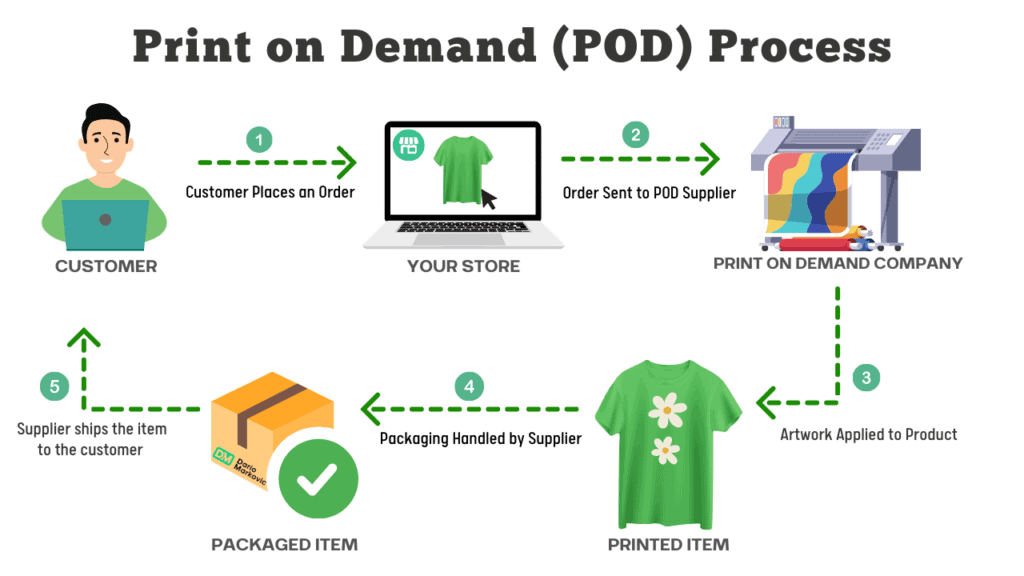
Key Features of Print on Demand:
No Inventory Management: You don’t need to worry about storage or inventory since products are printed and shipped per order.
Automated Fulfillment: Once you upload your designs, the platform takes care of production and delivery.
Creative Freedom: You can focus entirely on design without handling logistics.
Pricing:
Printful:
Base Product Price: Costs depend on the product, for example:
T-shirts: $9.95 – $16.50 (depending on the type)
Mugs: $7.95 – $10.00
Posters: $4.00 – $8.00
Profit Margins: You set the selling price, and the difference between the selling price and base product price is your profit.
Example: If you sell a t-shirt for $25 and the base cost is $12, your profit is $13 per shirt.
Personal Quote
I personally never started a print-on-demand, but I recognize it as a creative and automated venture for those looking to monetize their designs without managing inventory.
Platforms like Merch by Amazon and Teepublic allow you to upload designs to be printed on physical products such as t-shirts, mugs, or posters. When a customer places an order, the platform takes care of the printing and shipping, and you earn a royalty for each sale.
This model allows creators to focus on designing while letting the platform handle the logistics, making it a low-maintenance, passive income opportunity.
I see it as a great way for creative individuals to turn their designs into a consistent income stream with minimal effort.
My Recommendation
Here is a popular platform for Print on Demand:
11. YouTube Automation
In 2023, I launched three YouTube channels, including my private channel, Dario Markovic Digital, where I share eCommerce tips for DTC brands and digital marketing.
Starting with no video production experience, I developed a systematic approach that now generates $80 monthly in combined ad revenue across all of my channels.
While many YouTube channels rely on personal branding, my approach operates through a team of specialized freelancers handling distinct roles in the production pipeline, ensuring scalability and consistency:
Researcher/Scriptwriter: We identify high-potential topics based on a proprietary system evaluating search volume, competition, and commercial potential.
Voice Talent: We work with a team of voice actors, maintaining consistency across content while managing production volume.
Video Editors: Our editing team follows strict quality standards, allowing us to scale production to 12-15 videos weekly across all channels.
Thumbnail Designers: Through A/B testing, we’ve improved click-through rates by 41% over 12 months.
The financial scalability is evident: Each video costs $320 to produce and generates an average of $1,200 in lifetime revenue, but since we are still in the growth phase, we anticipate that it will take 4-6 months to achieve full ROI from the current investment in production.
For those interested in this model, I recommend starting by carefully selecting a niche and conducting extensive research on potential topics. My personal channel grew to 224 subscribers in 4 months after selecting a niche with strong search volume but low competition.
The automation comes from building efficient systems that allow the channel to run with minimal oversight. Currently, I spend just 3-4 hours
My Recommendation
Here is a course platform where you can learn and create your automated youtube business:
12. Sell an Online Course
If you’re an expert in a particular field, why not share your knowledge and make money while at it?
Creating online courses enables experts to leverage their expertise and earn income through pre-recorded lessons and automated sales processes.
Automated platforms play a critical role in the success of online courses by managing:
student enrollment
payment processing
scalability of returns
Platforms like Udemy and Skillshare offer built-in audiences, while others like Teachable and Podia offer extensive customization and marketing features.

Personal Quote
After building an audience through my blog and YouTube channels, I am now developing my first online course focused on helping entrepreneurs grow their eCommerce DTC brands.
The course will combine practical strategies, insights, and tools I have used to drive growth for my own businesses and those of my clients.
I have already developed a strong foundation through my content channels, and this course is the next step in offering in-depth guidance for those looking to build or scale their eCommerce brands.
Through my experience creating successful content, I’ve identified key factors that make a course both valuable and scalable:
Niche-specific focus: This course is targeted specifically at DTC eCommerce businesses, allowing it to provide tailored strategies and insights that apply directly to this growing market.
Engaging content structure: The course will combine video lessons, worksheets, and real-life case studies to maximize value for students, something I have found to be a great way to enhance engagement.
Interactive elements: I’ll be integrating opportunities for students to connect with other eCommerce entrepreneurs, share ideas, and learn from each other.
For anyone looking to create their own course, I recommend starting small with focused, high-impact lessons that provide clear value. With a solid understanding of your audience’s pain points, you can develop a course that addresses their specific needs.
I’ve found that the most successful courses help solve a tangible problem, and I believe this course will empower students to take action with strategies they can immediately apply to their businesses.
My Recommendation
Here is a course platform where you can sell your online courses:
13. Create Product Review Videos
Upon acceptance into the Amazon Influencer Program, you can earn income by crafting concise video reviews of products. Amazon showcases these reviews on the corresponding product pages and compensates you with a commission for every purchase viewers make after watching your video.
With tools like FlexClip, you can streamline the video creation process, ensuring your reviews are professional and engaging.
Once you have created your product review videos and have uploaded them, the process becomes entirely automated.
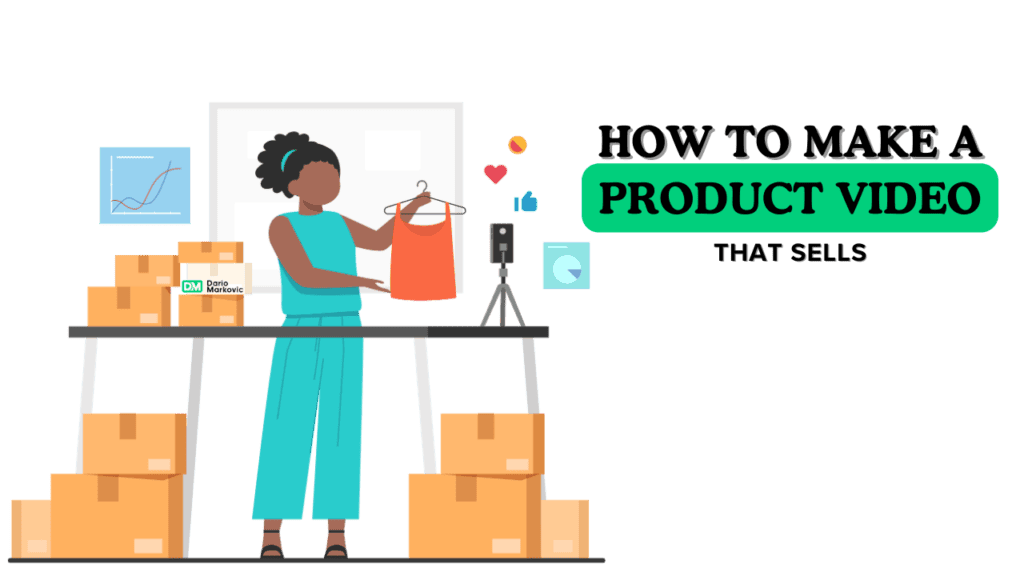
Personal Quote
I’ve worked closely with influencers who excel in this space. By joining programs like the Amazon Influencer Program, influencers can earn commissions by creating video reviews for products listed on Amazon.
These videos help customers make purchase decisions and generate passive income through affiliate commissions.
Key takeaways from working with influencers:
Be concise and honest: Focus on product features and give genuine feedback.
Use professional tools: Platforms like FlexClip help create polished videos.
Leverage your audience: Even indirect partnerships can boost video visibility.
Once uploaded, product review videos can generate ongoing commissions, making this a low-maintenance income source.
For beginners, focus on a niche you know well and create simple, engaging reviews.
My Recommendation
Here is a website that can help you create and monetize your product review videos:
14. DropShipping
One widespread, fully automated business examples is the dropshipping model, which eliminates traditional inventory management challenges while allowing you to run an online store..
Non-technical entrepreneurs can effectively manage a dropshipping business using user-friendly tools like Shopify, WooCommerce, and automation software designed to handle product listings, order processing, and fulfillment.
With the technical aspects taken care of, business owners can focus on product design and marketing efforts and let the software take care of the rest.
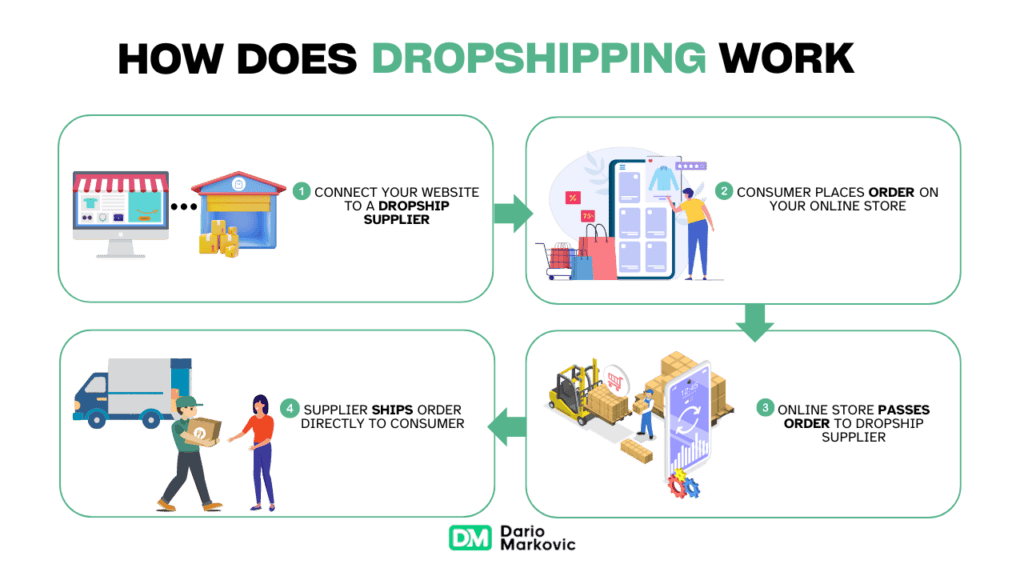
Key Features of Dropshipping:
No Inventory Management: You only purchase products when customers place orders, so there’s no need for inventory.
Automation: With tools available, you can automate key tasks like order management and fulfillment.
Scalable: Dropshipping allows you to scale without the overhead of managing a warehouse or handling physical products.
Pricing
Shopify:
Plans:
Basic: $29/month
Shopify: $79/month
Advanced: $299/month
Special Offer: When you click on this link, you can get Shopify for only \$1 for the first three months, making it a cost-effective way to start your dropshipping business.
Personal Quote
Dropshipping allows entrepreneurs to scale their business without the hassle of inventory management. With the right tools and automation, it becomes an efficient model where you can focus on marketing and growth.
For beginners, I recommend starting with a niche that you’re passionate about and using automated tools to handle the logistics, allowing you to focus on marketing and customer acquisition.
My Recommendation
Shopify is one of the best platforms for starting a dropshipping business, especially if you’re looking for ease of use and automation.
With the $1 for the first three months deal, it’s an affordable option to get started and scale your online store.
15. Email Marketing Automation
Email marketing automation is a game-changer for businesses looking to build stronger relationships with customers while saving time.
Platforms like Mailchimp and ActiveCampaign allow you to send personalized marketing campaigns, targeted content to your audience at scale, making it easier to stay connected with your customers and increase conversions.
Key Features:
Personalization: Tailor emails based on customer behavior to improve engagement and drive better results.
Responsive Layouts: Automatically optimize emails for both mobile and desktop devices.
Improved Engagement: Segmented campaigns boost open rates and increase interactions with your audience.
Higher Conversions: Automated follow-ups can increase conversion rates by up to 30%, ensuring you get the best return on your email efforts.

Pricing
ActiveCampaign starts at $15/month for basic features, with higher plans available for more advanced capabilities
Personal Quote
Automating your email marketing isn’t just about saving time – it’s about building stronger, more personalized connections with your audience, at scale.
If you’re just starting out, automating your emails can save you countless hours while building meaningful connections with your audience – it’s the first step toward growing your business with minimal effort.
My Recommendation
Popular email automation platform to create automated business email campaigns:
What is Automated Business?
After transitioning from a 70-hour-week corporate job to running largely automated businesses, I’ve developed a precise definition through practical experience: An automated business utilizes strategic systems and technology to generate revenue with minimal human intervention after initial setup.
This definition has been refined through implementing automation in over 200 businesses across diverse industries.
The Power of Business Automation
The essence of AI in business automation involves:
1. Strategic process mapping: Through detailed workflow analysis, we identify which elements can be automated (typically 60-75% of operations) and which require human creativity or decision-making
2. Technology implementation: Selecting and integrating appropriate software tools to handle repetitive tasks consistently and accurately
3. Systems documentation: Creating comprehensive standard operating procedures that allow for consistent quality regardless of who executes remaining manual processes.
The tangible benefits I’ve documented across my client portfolio include:
Efficiency improvements averaging 42% for core business process automation
Error reduction of 63-78% for automated tasks compared to manual execution
Cost savings averaging 31% for administrative functions
Time reclamation of 15-30 hours weekly for business owners In practical terms, this means orders being processed, payments being received, and customers being kept informed without requiring constant oversight.
For my e-commerce clients, properly implemented automation has reduced order-to-delivery management time from approximately 25 minutes per order to under 3 minutes.
The ultimate benefit is freedom of focus.
When routine operations happen automatically, entrepreneurs can direct their attention to high-leverage activities like strategic planning, relationship building, or pursuing personal interests outside the business.
How Can Automated Business Benefit You?
Here are six important benefits:
Enhance Efficiency: Automation boosts business efficiency by streamlining operations and reducing the chances of errors.
Maximize Productivity: By integrating automated processes, businesses can improve overall productivity, no matter their size.
Revolutionize Operations: Whether you’re a startup or a multinational corporation, automation can transform the way you conduct business.
Key to Optimizing Processes: Platforms like UiPath, a leader in robotic process automation (RPA), help streamline tasks, improve efficiency, and increase productivity.
Ecommerce Automation: Automating ecommerce processes, such as inventory management and customer support, helps businesses scale seamlessly and improves profitability.
Mitigate Challenges: Professional software integration services can help minimize the difficulties of automation implementation, ensuring businesses benefit from automation without significant drawbacks.
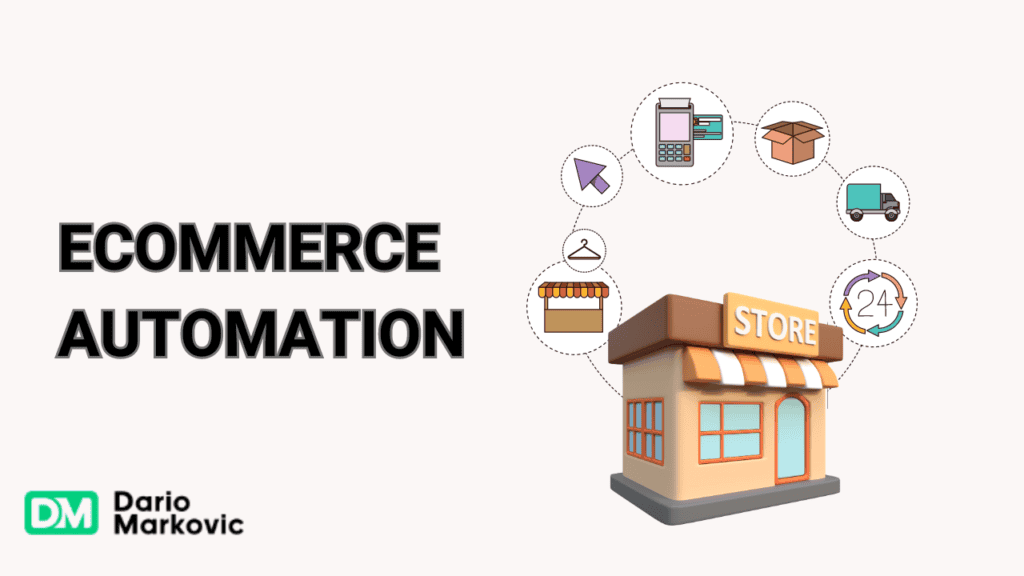
However, with the assistance of professional software integration services, many of the challenges associated with automation implementation can be mitigated, ensuring that businesses can reap the benefits while minimizing potential drawbacks.
Promoting Your Automated Business Online
You’ve got everything set up – now shout it from the digital rooftops. But smartly, though, we’re not talking spammy emails or yelling into social media voids here.
- Social Media Savvy: Choose platforms where your peeps hang out. Post engaging content and run ads if needed, but keep it accurate. Dive deeper.
- Email Marketing Strategies Magic: Build an email list pronto. Offer something valuable upfront in exchange for their precious emails.
- SEO Is Your Bestie: Optimize every piece of online content. Keywords are good; answering user intent is better.
- Get Creative With Content: Blogs, videos, infographics – mix things up. Keep providing value and watch the traffic roll in.
These are the steps to tackle your goals confidently. It’s time to plunge into action and turn our plans into reality.
My Experience with Automated Business: How I Built a System That Runs Itself
When I first started, my ecommerce business was anything but automated. I was deeply involved in every aspect at Eric Javits—customer service, marketing efforts, sales, fulfillment—you name it.
The constant hustle left me feeling overwhelmed and stuck in a cycle of working in my business rather than on it.
The turning point came when I realized that scalability requires automation. I needed to remove myself from repetitive tasks and build a structure that could function without my constant oversight.
My Key Lessons in Business Automation
Leveraging Technology
The first step was integrating the right software tools. I implemented:CRM and email marketing automation (e.g., ActiveCampaign, Klaviyo)
Ecommerce automation (Shopify apps for order processing, inventory tracking, and abandoned cart recovery)
Chatbots and AI-driven customer support (like ManyChat and Zendesk)
Automated accounting and invoicing (QuickBooks, Stripe)
Building Standard Operating Procedures (SOPs)
Having well-documented processes was a game changer. I created SOPs for tasks like lead generation, email follow-ups, and content creation, making it easy to delegate work effectively.Outsourcing & Delegation
Instead of trying to do everything myself, I hired virtual assistants and freelancers for customer interactions, content creation, and social media management. This freed up my time to focus on scaling rather than daily operations.Automating Sales Funnels
Using funnels and paid ads, I was able to drive leads and convert customers without manually handling every sale. A properly optimized funnel turns cold traffic into paying customers, even while I’m offline.
The Challenges of Business Automation
While automation has been a game-changer, it wasn’t without hurdles.
Some of the biggest challenges included:
Finding the right tools (not all automation software company is created equal)
Balancing automation with personalization (customers still crave human connection)
Scaling without sacrificing quality (ensuring systems remain effective as the business grows)
Final Thoughts
Automating my business has been one of the most rewarding decisions I’ve made. It allowed me to shift from being an overworked entrepreneur to someone who works smarter, not harder.
If you’re looking to create an automated business that runs itself, start by automating the small tasks, document your processes, and leverage technology to streamline operations.
Do you have experience with business automation?
Drop a comment below—I’d love to hear about it!
FAQ
An automated business is a company that leverages technology, software, and systems to minimize human involvement in daily operations. This can include automated marketing, customer service, inventory management, order processing, and financial transactions.
The goal of automation is to improve efficiency, reduce costs, and allow business owners to focus on strategy and growth.
The best automated business depends on your goals, industry, and resources. However, some of the most successful automated business models include:
Dropshipping – Automated order fulfillment and inventory management.
Print-on-Demand (POD) – Automated printing and shipping services.
Affiliate Marketing – Passive income through automated content promotion.
SaaS (Software as a Service) – Recurring revenue with minimal human intervention.
Subscription Boxes – Automated billing and order fulfillment.
AI Chatbots & Virtual Assistants – Automated customer service solutions.
To start an automation company, follow these steps:
Identify a Problem – Find an industry that benefits from automation (e.g., marketing, logistics, finance).
Develop a Solution – Create or leverage existing automation tools.
Choose a Business Model – SaaS, consulting, or product-based automation.
Build a Team – Hire developers or use white-label automation tools.
Test and Optimize – Ensure efficiency before scaling.
Market Your Business – Use digital marketing, SEO, and outreach strategies.
Advantages commonly attributed to automation include higher production rates and increased productivity, more efficient use of materials, better product quality, improved safety, shorter workweeks for labour, and reduced factory lead times.
It’s possible for a home automation business to make $150,000 or more in profit a year, but keeping your costs low is key to that profitability. Any business will have operating expenses, but you’ll need to minimize those expenses within reason.

